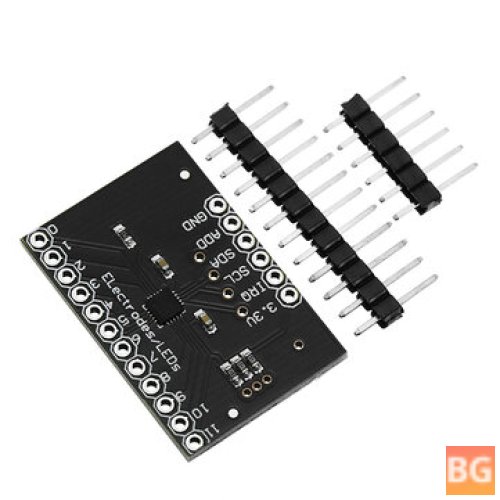The Capacitive Touch Sensor Board is a versatile tool for a variety of applications, allowing for capacitive touch sensing with up to twelve individual electrodes and a simulated thirteenth electrode.
Its I2C interface makes for easy integration with other devices and the board is responsive and accurate in registering touch inputs. The only real limitation of this board is its lack of integrated voltage regulation, but its compact size and easy-to-use interface make it a great option for touch-sensitive applications. Overall, the Capacitive Touch Sensor Board is a simple and reliable solution for anyone in need of a touch sensor controller.
Welcome to my investigation of the Capacitive Touch Sensor Board a breakout board for Freescale's MPR121QR2. This board allows for capacitive touch sensing with up to twelve individual electrodes and a simulated thirteenth electrode, making it a versatile tool for a variety of applications.
One of the crucial features of this board is its I2C interface which allows for easy integration with other devices. The four jumpers on the bottom of the board provide flexibility in addressing, and the lack of regulation on the board means that the voltage supplied can be between 2.5 to 3.6VDC. When tested with an Arduino, the board was responsive and accurate in registering touch inputs.
The only real limitation of this board is its lack of integrated voltage regulation which may require additional equipment or careful consideration during use. However, the compact size and easy-to-use interface make it a great option for touch-sensitive applications such as 'Makey-Makey' type touch buttons or proximity sensing.
Overall I highly recommend the Capacitive Touch Sensor Board for anyone in need of a simple and reliable capacitive touch sensing solution. Its versatility and ease of use make it a great addition to any project, and its low cost and small size make it accessible to even the most budget-conscious users. To summarize, if you're looking for an effective touch sensor controller, look no further than the Capacitive Touch Sensor Board.
